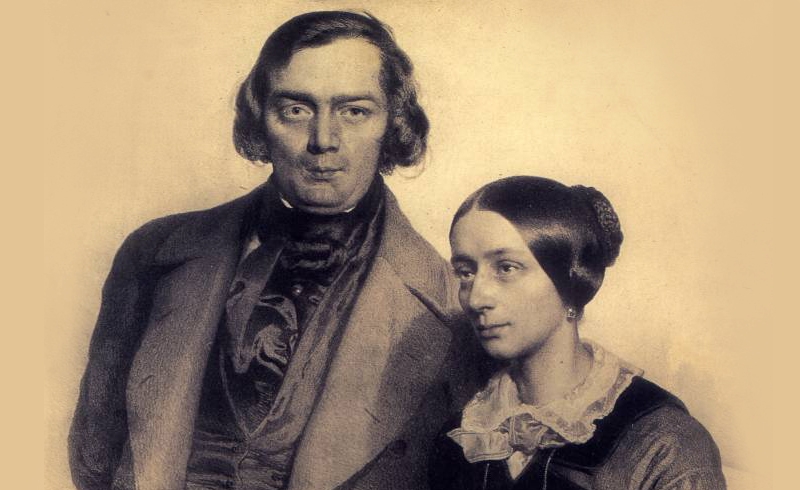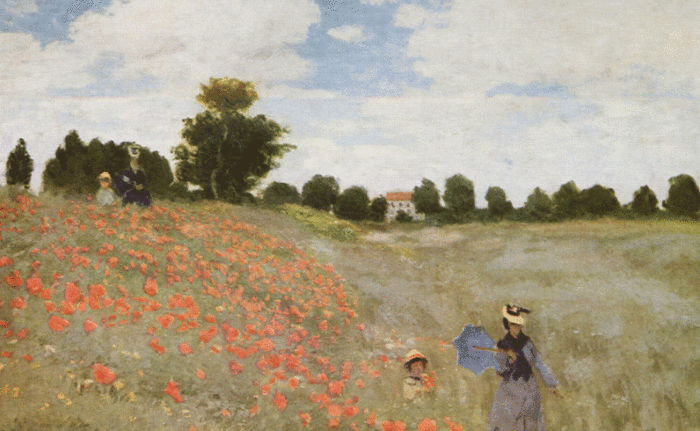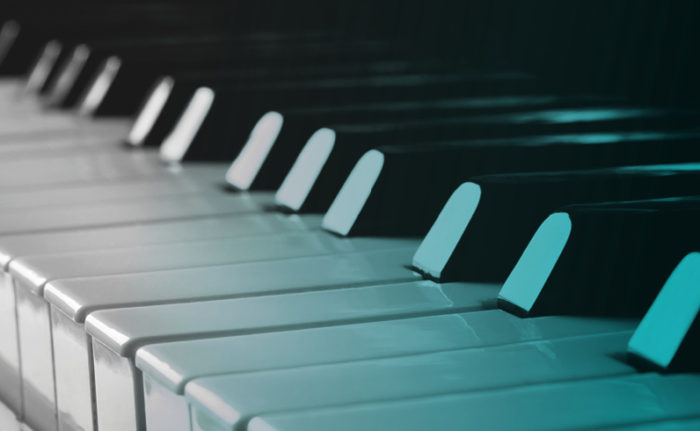In February 2020, the Houston Symphony presents a two-week festival dedicated to one of the greatest composers of the Romantic era: Robert Schumann. As we approach Robert and Clara Schumann’s 179th wedding anniversary on September 12—just one day before Clara’s birthday—discover the unlikely path Schumann took to fame, his First Symphony, and love. Learn more about the Schumann Festival here.
Beginnings
As the son of a bookshop owner in the idyllic Saxon town of Zwickau, Robert Schumann was immersed in both literature and music from an early age. By his teenage years, he had already devoured many Greco-Roman classics as well as the latest novels and poems of the German Romantics. He was also developing a promising talent for piano performance and composition, and could not decide whether to devote his life to literature or music.
The unexpected death of his father in 1826 temporarily seemed to moot his dilemma. His father’s will stipulated that Schumann attend university, so at the age of seventeen the budding aesthete packed his bags for law school at the University of Leipzig. His musical and literary pursuits, however, continued unabated, and his university friends later testified that he never attended a single law lecture.
Law School and Other Disasters
Instead, he took advantage of Leipzig’s rich musical life, reveling in his discoveries of Bach, Handel, Schubert and Chopin. He studied with the imminent piano teacher Friedrich Wieck, and was soon well-known throughout Leipzig musical society as a charming young man of great promise. He ultimately decided to pursue music confessing to his mother that “A mechanical, forced lawyer without love for his profession will not, therefore, be a very good one.” Concerned about her son’s material prospects as a musician, she wrote to Wieck, who assured her that within three years he would make Schumann “into one of the greatest living pianists, who will play more warmly and ingeniously than Moscheles, and more grandly than Hummel.”
Unfortunately, Wieck’s prediction did not come true. Schumann quickly became dissatisfied with his teacher, saying “Instead of weighing every note in the balance, and insisting that I study each piece conscientiously, page for page, he let me play through everything haphazardly, good and bad alike, and bothered to correct neither touch nor fingering…” Wieck seemed far more interested in developing the talent of his daughter, Clara. More troubling, however, was the numbness that began to affect the ring finger of his right hand. Whether the result of faulty technique (Schumann’s practice diary makes special note that he needs to practice with “utmost relaxation of the hands”—stiffness when playing piano is a sure recipe for injury) or a strange finger strengthening device, Schumann gradually lost the ability to play with the finger, making a career as a concert pianist impossible.
Art and Love
Determined to continue as a musician, Schumann resolved to focus on composition instead. In the following years, Schumann wrote numerous piano works which would become cornerstones of the Romantic repertoire, founded a groundbreaking music journal and . . . fell in love. While Schumann was busy composing, Wieck’s daughter Clara became an internationally renowned piano virtuoso, and by Christmas 1835, Schumann and Clara were very much in love. Unfortunately, they faced a nearly insurmountable obstacle: Clara’s father, Friedrich Wieck, was dead set against the union. Perhaps he had hoped for a richer husband for Clara (Schumann’s piano works had admirers among connoisseurs, but they were far from being bestsellers), or perhaps he could not bear to part with the beloved child he had raised to be one of the world’s leading pianists. Whatever the reason, he proved intractable. Seeking to foil the young lovers at every turn, he forbid them to see each other and made unrealistic demands regarding Schumann’s income as a precondition for marriage.
Given the laws of the day, Robert and Clara had to take Wieck to court in a protracted legal battle that lasted an entire year. Ultimately, they won their suit, and on September 12, 1840, after nearly five years of frustrated love, they were finally wed.
Symphonic Fire
Schumann’s First Symphony dates from their blissful first year of marriage. The previous year, he had abandoned composing for solo piano, producing instead several masterful sets of songs for voice and piano. Songs combined his love of poetry and music, and he also hoped this genre would prove more sellable as he embarked on married life (it did; though he wrote most of his song cycles in 1840, he would publish them incrementally throughout the remainder of his life, creating a steady income from the proceeds). Now that he was married, he wanted to prove himself to the public (and perhaps also to Clara’s father) in the most prestigious instrumental genre of all: the symphony.
In January 1841, Schumann attempted a Symphony in C minor, but soon abandoned it. Then, later in the month he made the following entries in his “house book” (a sort of domestic diary):
23 January: Began spring symphony
24 January: Finished the Adagio and Scherzo of the symphony
25 January: Symphonic fire—sleepless nights—on the last movement
26 January: Hurrah! Symphony completed!
Thus, in just four days, Schumann completed a draft of his first symphonic masterpiece. He continued to tinker with it in the following months, making one or two significant changes, but the speed and felicity with which he composed it are remarkable nonetheless. He presented his new work to his friend, the internationally successful composer and conductor Felix Mendelssohn, who offered him a few tips regarding the orchestration and agreed to conduct the premiere at a special concert for the benefit of the Leipzig Gewandhaus Orchestra’s pension fund on March 31. The first half of the program would feature Clara in her first public performance post-marriage, and the second half would feature his symphony. The concert was a brilliant success, a happy triumph for the young couple.
Spring blossoms in the valley
Even though the symphony was written in the dead of winter, Schumann was inspired by thoughts of springtime, specifically the final lines of a poem by Adolph Böttger:
O wende, wende deinen Lauf,
Im Tale blüht der Frühling auf!
O turn, turn from your course,
Spring blossoms in the valley!
These lines fit perfectly with the opening of the symphony, like a kind of song without words:

Of the opening introduction, Schumann wrote:
“I should like the very first trumpet entrance to sound as if it came from on high, like a summons to awakening. Further on in the introduction, I would like the music to suggest the world’s turning green, perhaps with a butterfly hovering in the air, and then, in the Allegro, to show how everything to do with spring is coming alive . . . These, however, are ideas that came into my mind only after I had completed the piece.”
There can be no doubt that Schumann was inspired by thoughts of springtime, but he was also wary of affixing too many words to his score, as he did not want to limit the imaginations of listeners with his own ideas, poetic though they might be. Rather than write music that was descriptive (i.e. “The flutes in measure 20 represent butterflies”), Schumann wanted to write music that was suggestive of the general mood or atmosphere of springtime.
The symphony requires little further explanation, as it is one of the most accessible and delightful works in the repertoire. A few brief notes will suffice: the introductory “awakening” motto mentioned above makes a grand return at the climax of the first movement; the slow second movement is a sort of theme and variations with interludes (the main theme makes appearances in the violins, cellos and woodwinds); the minor-key scherzo contains not one, but two contrasting major-key interludes; and the dancing finale features prominent solos for the horns and flute. The trombones in particular help bring the symphony to an exhilarating conclusion.
—Calvin Dotsey
Don’t miss Schumann’s Symphony No. 1 during the Houston Symphony’s Schumann Festival in February 2020! Learn more and get tickets.



